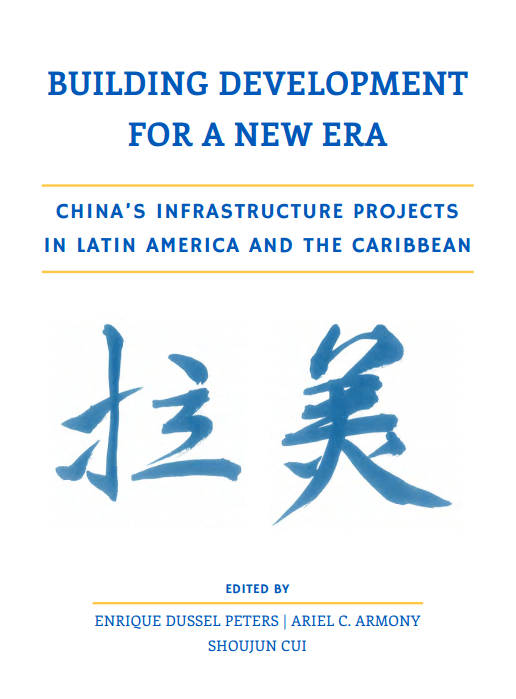Over the past decade, China has become a leading lender and builder of infrastructure projects in the developing world. With extraordinarily high savings and a declining investment rate at home, China has reached out to invest in a diverse array of infrastructure projects from West Africa to the Amazon.
One of the major drivers of the infrastructure investment is the Belt and Road initiative (BRI). Launched in 2013 by President Xi Jinping as One Belt One Road (OBOR), the initiative has increased in funding (aiming at US$1 trillion) and expanded in scope, now including projects in over 70 nations. This investment abroad constitutes an ambitious foreign policy, and one with deep geopolitical implications.
The recent wave of China-backed infrastructure has been the focus of increasing debate among experts, governments, and the worldwide media. From a contentious process over control of a strategic Sri Lankan seaport to the controversial China-Pakistan Economic Corridor (CPEC), a major Belt and Road-sponsored partnership, China’s global role is raising difficult questions that require close analysis.
At the heart of the matter is China’s role as a main provider of public infrastructure in many Latin American and Caribbean (LAC) countries. Earlier in 2018, China invited LAC to join the BRI. With more than 100 Chinese-backed civil engineering projects already in design or construction representing a total of US$60 billion, the region seems to have found in China a supplier that can fill its long-standing gap in energy and transportation infrastructure.

Our new book, Building Development for A New Era: China’s Infrastructure Projects in Latin America and the Caribbean, analyses this phenomenon’s central trends and challenges.
The research builds on a truly global and multidisciplinary partnership between institutions and scholars, including political scientists, economists, anthropologists, and development practitioners from Asia, Europe, Latin America, and the United States. With a focus on a diverse sample of LAC countries, our book is the first to take stock of what has been happening in the field of Chinese infrastructure investment.
Thanks to Beijing’s loans, Chinese corporations are building dams and hydroelectric power plants in the Amazon and Patagonia. They are laying thousands of kilometers in rail tracks to reduce freight transportation costs and connect populations in Brazil, Peru, and Venezuela. China’s development banks are even financing a state-of-the-art nuclear energy plant in Argentina. In what has become the most ambitious civil engineering project in recent decades (although one plagued with challenges and uncertainties), a Hong Kong-based billionaire has been granted the authority to build a canal through Nicaragua, connecting the Pacific and Atlantic oceans to compete against the Panama Canal.
Our analysis of Chinese infrastructure investment shows that these investments advance both the Chinese government’s interest in strengthening bilateral relationships with countries with which they already have high levels of trade, as well as the financial interests of Chinese firms that seek to expand their overseas activities.
This level of Chinese activity would have been unthinkable just three decades ago. Different—but not mutually exclusive—phases have structured the recent history of China-LAC relations. Beginning in the 1990s, the relationship experienced a rapid growth in commercial terms.
With the Great Financial Crisis of 2008, China funneled a large volume of outward foreign direct investment (OFDI) finance to LAC, and since 2013, China has become significantly involved in major infrastructure projects in LAC. Due to the novelty of the ventures, investing in infrastructure in LAC poses an important learning opportunity for Chinese firms, which have not responded adequately to local culture and regulations.
We find that most projects in LAC have faced local backlash because of environmental concerns about pollution and harm to residents and livelihoods. For example, there have been concerns about the environmental impact of Sinopec’s oil refineries in Moín, Costa Rica (the National Secretary of the Environment objected to the first evaluation for serious omissions) and in the Yasuní National Park, Ecuador (800,000 people signed a petition before the national government to stop the works.) The beginning of the construction of the Condor Cliff and La Barrancosa hydroelectric dams in Santa Cruz, Argentina, without an environmental impact assessment, led to the Argentine Supreme Court ordering the suspension of the projects.
In some cases, local courts intervened, with negative effects on the viability of the projects and the economic standing of the firms. Labour issues have also arisen, as firms have tended to hire Chinese nationals rather than local workers, especially in management and high-skill positions. Companies should increase the share of local-born workers, technicians, and executives to plan, design, build, and manage projects. Regarding the host countries, concerns about the lack of transparency and surrender of sovereignty have permeated public debates.
Nevertheless, the evidence we have gathered does not allow us to conclude that China’s lending and operations are detrimental for either the economic or the political development of Latin America. The investment fills a crucial gap in infrastructure needs for the region, while establishing a new ally that will help further their economies and standing on the global stage.
We find that if China wants to have more local success with the projects, they must embed them within local communities and increase communication and feedback with local civil society (rather than a top-down approach based on state-to-state negotiations).
These firms should improve financial forecasts and budgeting to minimise divergence between estimated costs and final costs. Chinese firms should minimise the impact of obstacles typical of “latecomer” suppliers of complex capital goods: poorly developed systems of innovation; underdeveloped local supply chains; and a lack of experience in coordinating industry networks. By doing so, they can overcome the vertical integration model, which is characterised by a company’s control of the whole supply chain and privileges local partners and suppliers in China.
The environmental and labor concerns will most likely continue. However, the host nations need to provide more transparency, competition, and a stronger rule of law. In turn, China can improve and increase funding, planning, and management in the region by partnering with institutions such as the Inter-American Development Bank and CAF (Latin America’s Development Bank). Chinese firms can do a better job to comply with labor and environmental standards.
China is filling a vacuum as a source of much needed investment. There is no evidence that building roads, railways, and ports in LAC poses a threat to regional integration or traditional international alliances with the US and Europe. Chinese firms have the opportunity to draw valuable experience by operating in LAC, a region with relatively better legal standards than other places where China operates, such as Africa.
The strategic partnerships between China and LAC are not based on ideological affinity, as continued relations with Argentina’s Mauricio Macri, Brazil’s Michel Temer, and Chile’s Sebastián Piñera illustrate. These countries, and others covered in our volume, have not jeopardised their macroeconomic situation as a result of receiving Chinese financing and investment (we do not cover the case of Venezuela’s oil-for-loan deals in the book).
The importance of BRI cannot be underestimated. Its vast reach—linking countries across Asia, Africa, Europe, and Oceania—has momentous implications for trade, energy, transportation, and infrastructure.
As we gather more systematic evidence of China’s involvement in infrastructure development in LAC, we will be able to improve our knowledge of its broader impact throughout the region.
This is important in order to avoid superficial, and biased, assessments that bring little value to our understandings of what has become a vital relationship.
